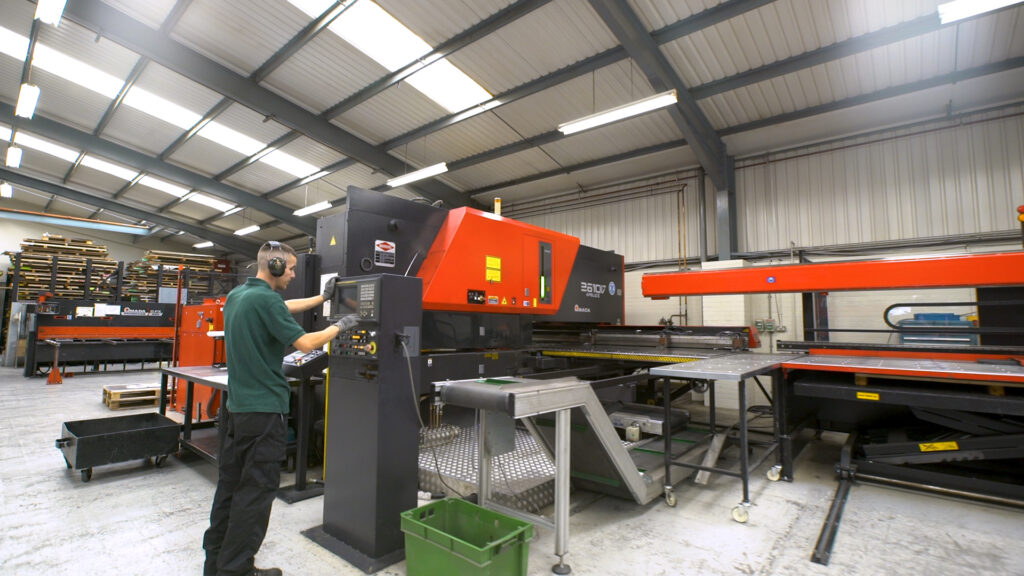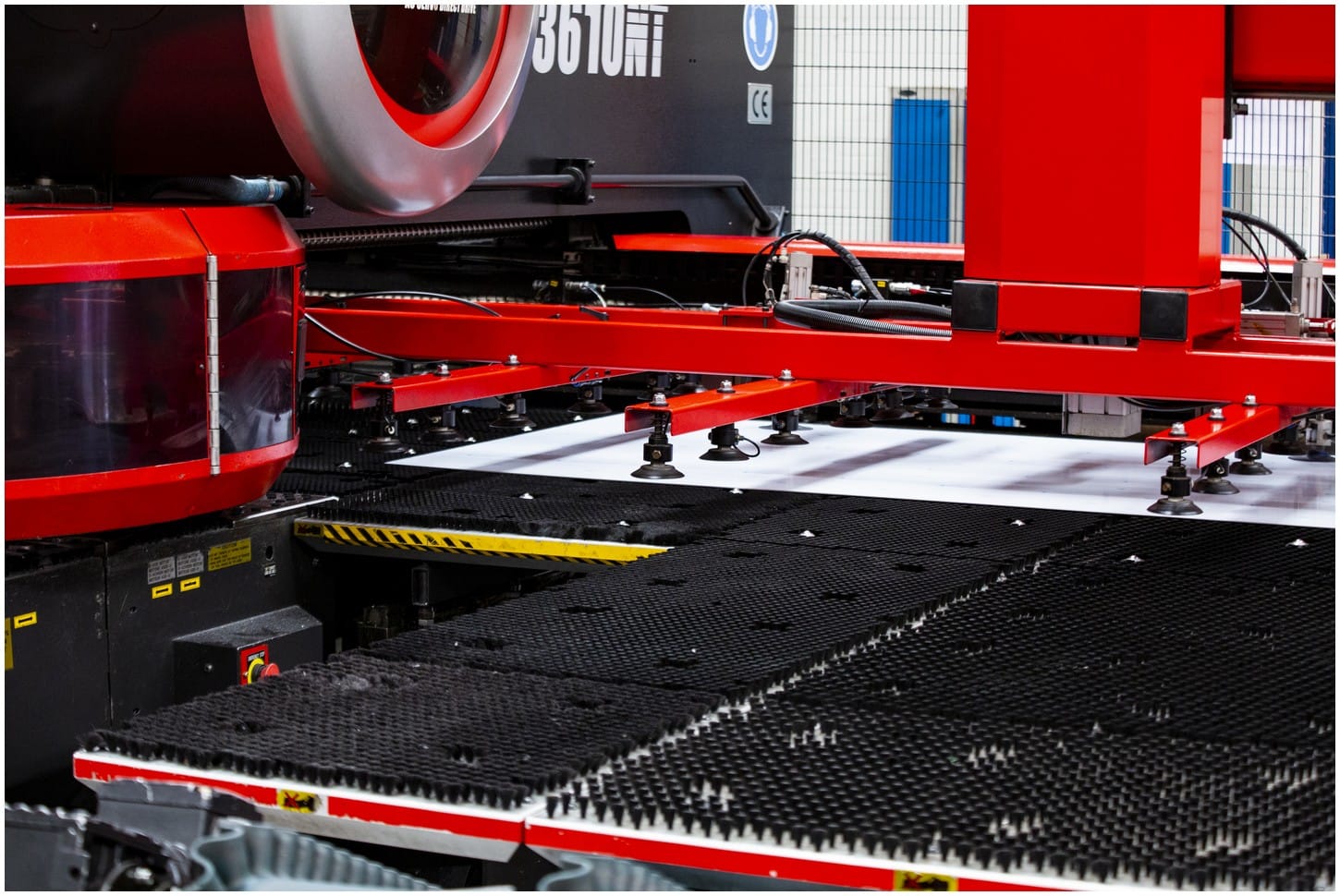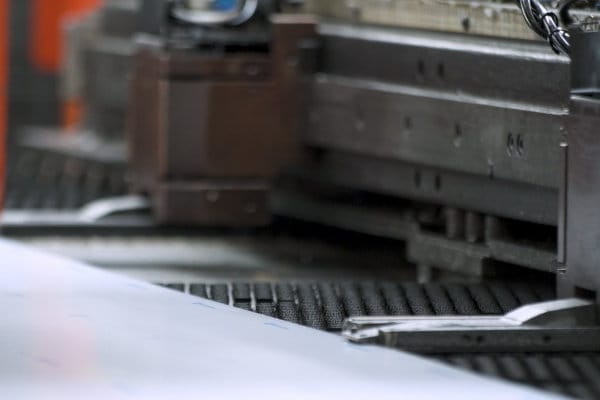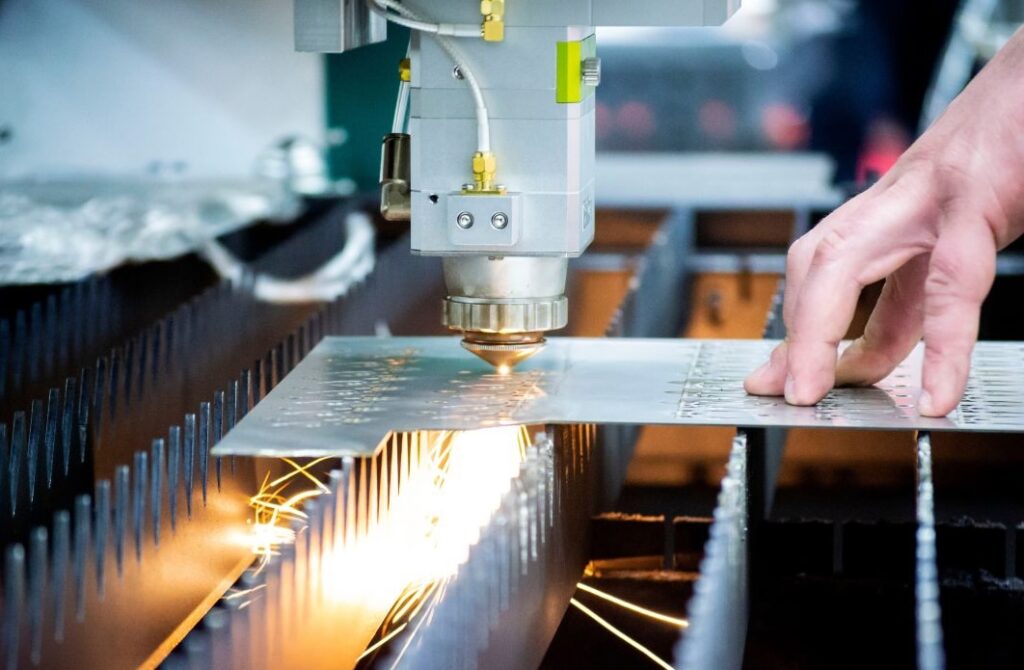
NC vs CNC Manufacturing: Which is Best?
While Numerical Control (NC) has been around for decades, Computer Numerical Control (CNC) continues to reshape how precision parts get...

CNC punching is a major part of modern metalworking, providing unmatched precision, efficiency, and adaptability. Industries such as automotive, aerospace, and electronics use this automated process to improve manufacturing accuracy and reduce material waste compared to traditional methods.
This article will explain exactly how it works, its key components, and its benefits. We’ll also discuss its applications, suitable materials, precision capabilities, and the factors to consider for effective use.
If you’re wondering what is CNC punch technology; it essentially plays a major role in contemporary metalworking.
Computer Numerical Control (CNC) punching refers to a process where a computer-controlled machine creates holes and shapes in metal sheets with high accuracy.
Unlike manual punching methods, CNC punching automates the operation, significantly improving efficiency and precision. This method is essential for achieving consistent results, meeting strict manufacturing standards, and minimising human error.
CNC punching machines utilise programmed instructions to execute precise movements that would be nearly impossible to replicate manually. This process allows for complex designs that are not only visually appealing but also functionally sound, meeting the specific needs of various applications in different industries.

CNC punching starts with programming, where detailed instructions guide the machine’s movements. The programming involves creating a detailed plan that includes the design layout, the dimensions of the parts, and the specific sequences of operations needed to produce the desired outcomes. Software controls punch placement, pressure, and speed, providing the desired result. The process involves feeding metal sheets into the machine, where a series of precise punches are executed based on pre-programmed designs.
The machinery can perform complex movements, allowing for varied and intricate designs that would be challenging to achieve manually. The CNC system coordinates the various components of the machine, and the punches are applied at the right angles and depths to create the intended shapes accurately. This level of automation reduces the likelihood of errors and enhances overall production efficiency.
A CNC punching machine consists of several key components, including the turret, clamps, and punch press. The turret is where the punches are stored and rotated to the correct position for each operation. Clamps secure the metal sheet in place, preventing movement during the punching process, which is vital for maintaining accuracy.
The CNC controller acts as the machine’s “brain” executing the programmed instructions. It processes the data from the design files and translates it into precise movements of the machine components. The punching head and die are vital in shaping the metal, while additional features like automated loading systems enhance efficiency, particularly in high-volume production settings. Automated loading systems can significantly increase throughput by reducing the time spent handling raw materials, allowing for faster production cycles.
CNC punching technology offers several advantages, including exceptional precision and accuracy. Automation in CNC punching offers considerable time savings and reduces material waste compared to manual methods. This efficiency translates into lower production costs and faster turnaround times for projects.
Furthermore, CNC punching is cost-effective for both high-volume production and custom manufacturing. Its versatility allows manufacturers to create a wide range of shapes, patterns, and hole sizes to meet diverse project needs. From intricate designs for decorative applications to strong components for structural purposes, CNC punching can accommodate various specifications with ease.
Additionally, CNC punching promotes better workplace safety. By automating the punching process, the need for manual handling of heavy sheets is reduced, thereby minimising the risk of injury associated with traditional methods.
CNC punching is widely used across various industries.
In automotive manufacturing, it plays a vital role in producing components like brackets, chassis parts, and enclosures. The electronics sector relies on CNC punching for creating intricate parts, such as circuit boards and housings, while the aerospace industry benefits from the ability to produce lightweight yet durable components that meet stringent safety regulations.
This technology is also advantageous for custom and prototyped metal parts, providing flexibility in design and production. Industries such as furniture, HVAC, and signage frequently utilise CNC punching to create components that are not only functional but also aesthetically pleasing.
The ability to produce complex designs with high precision allows manufacturers to differentiate their products in competitive markets.
Common materials suitable for CNC punching include steel, aluminium, copper, and brass. Each material offers distinct advantages depending on the application. For instance, steel is renowned for its strength, while aluminium is valued for its lightweight properties and corrosion resistance.
Material thickness significantly impacts the punching process, influencing machine settings and tooling choices. Thicker materials may require different punch designs or increased force to achieve the desired results, while thinner sheets can be punched at higher speeds. Additionally, some materials may present limitations, such as brittleness or specific thickness constraints, which must be considered when selecting materials for punching.
Understanding the properties of different materials is required for optimising the CNC punching process and making sure the final product meets quality and performance standards.
 CNC punching provides consistent and repeatable results, making it an invaluable tool in precision manufacturing. Tolerances play a major role in determining the quality of punched parts, and accurate programming is essential for achieving intricate designs. The ability to maintain tight tolerances is particularly advised in industries with strict quality standards, such as aerospace and medical manufacturing.
CNC punching provides consistent and repeatable results, making it an invaluable tool in precision manufacturing. Tolerances play a major role in determining the quality of punched parts, and accurate programming is essential for achieving intricate designs. The ability to maintain tight tolerances is particularly advised in industries with strict quality standards, such as aerospace and medical manufacturing.
Moreover, CNC punching systems often include feedback mechanisms allowing operators to monitor and adjust the process in real-time, further increasing precision. This level of control enables manufacturers to produce high-quality components that meet exact specifications, leading to increased customer satisfaction and reduced waste from defective parts.
When employing CNC punching, several factors are needed for the best performance and consistent results. Selecting the right materials and machine settings is essential, as these directly impact precision and efficiency.
Operator training is a key element in achieving successful CNC punching outcomes. Skilled operators understand how to set up and monitor the CNC process, meaning each project meets its design specifications. Regular training helps operators keep up with technological advancements, which further improves precision and efficiency.
Maintenance of the CNC machinery also plays a vital role in consistent performance and safety. Routine checks and timely repairs prevent machine wear, increase reliability and reduce downtime. A well-maintained CNC machine not only improves safety by minimising malfunctions but also extends the lifespan of the equipment, providing better long-term value.
CNC punching offers significant benefits in precision, efficiency, and versatility, supporting industries like electronics, automotive, and aerospace. By enabling intricate designs and high production volumes, CNC punching helps manufacturers achieve faster turnaround times and reduce waste.
For businesses in need of reliable and flexible metalworking solutions, CNC punching remains a top choice, driving both quality and innovation.

While Numerical Control (NC) has been around for decades, Computer Numerical Control (CNC) continues to reshape how precision parts get...

You’ll spot it in kitchens, building facades, factory lines and vending machines — sheet stainless steel doesn’t really stick to...

Metal laser cutting might sound like something overly complex, yet it’s actually a fairly neat way to get clean, repeatable...